






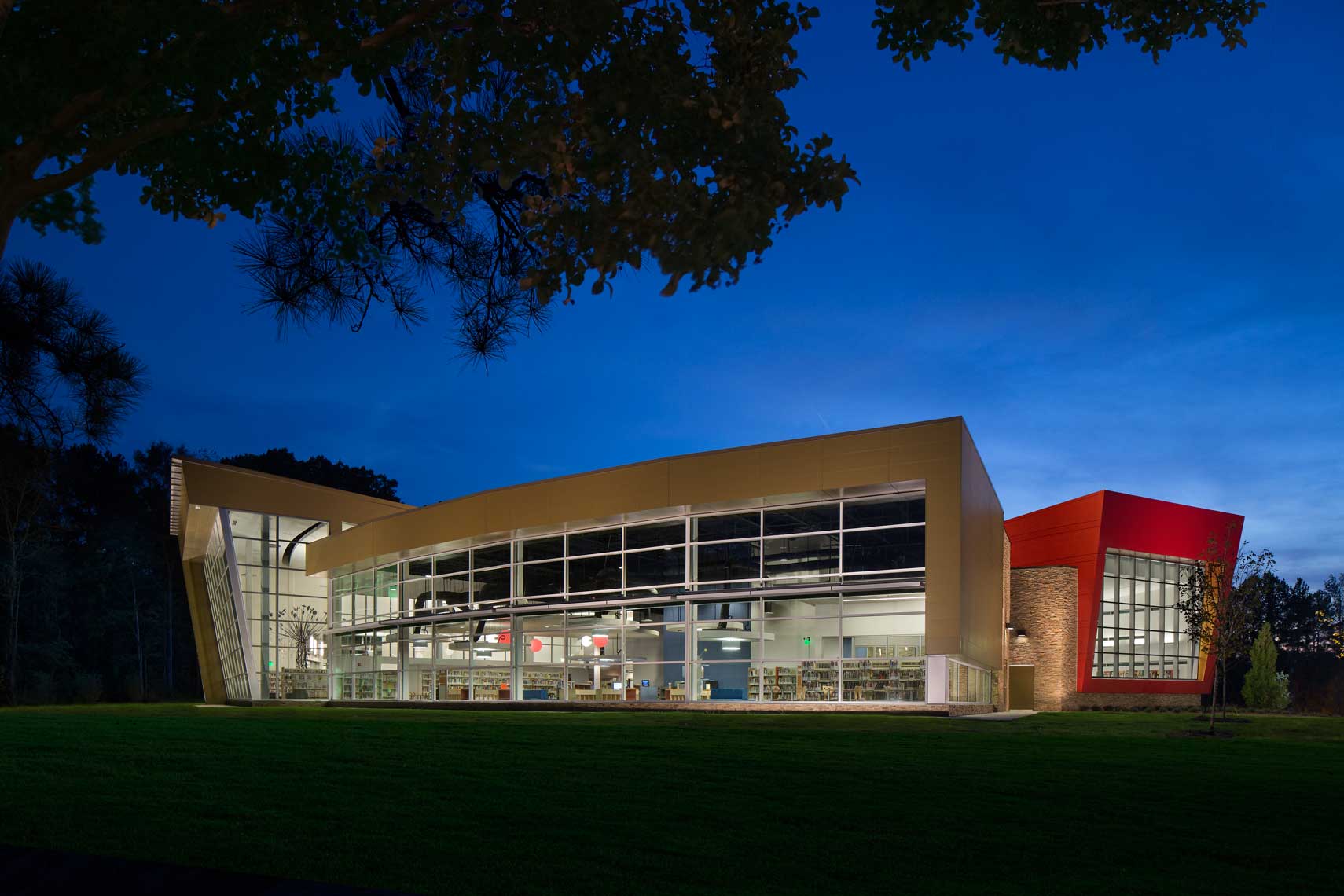

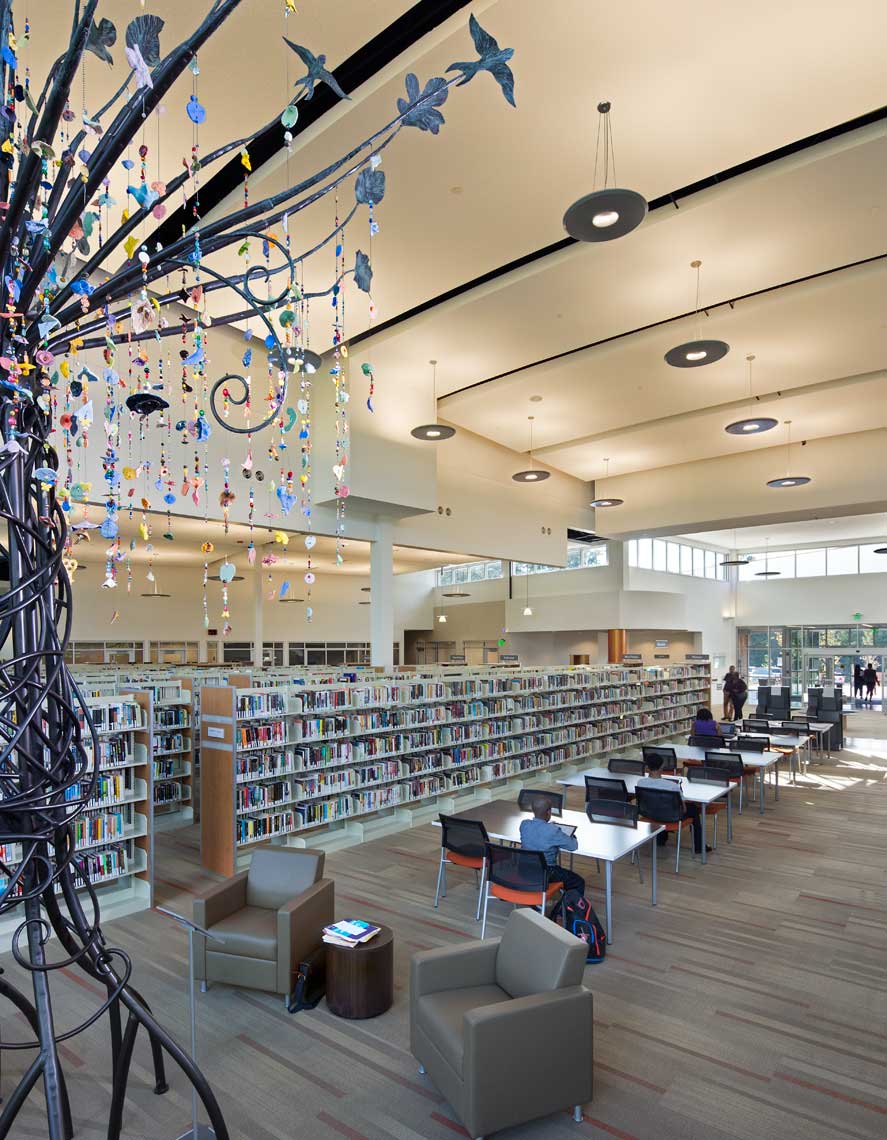



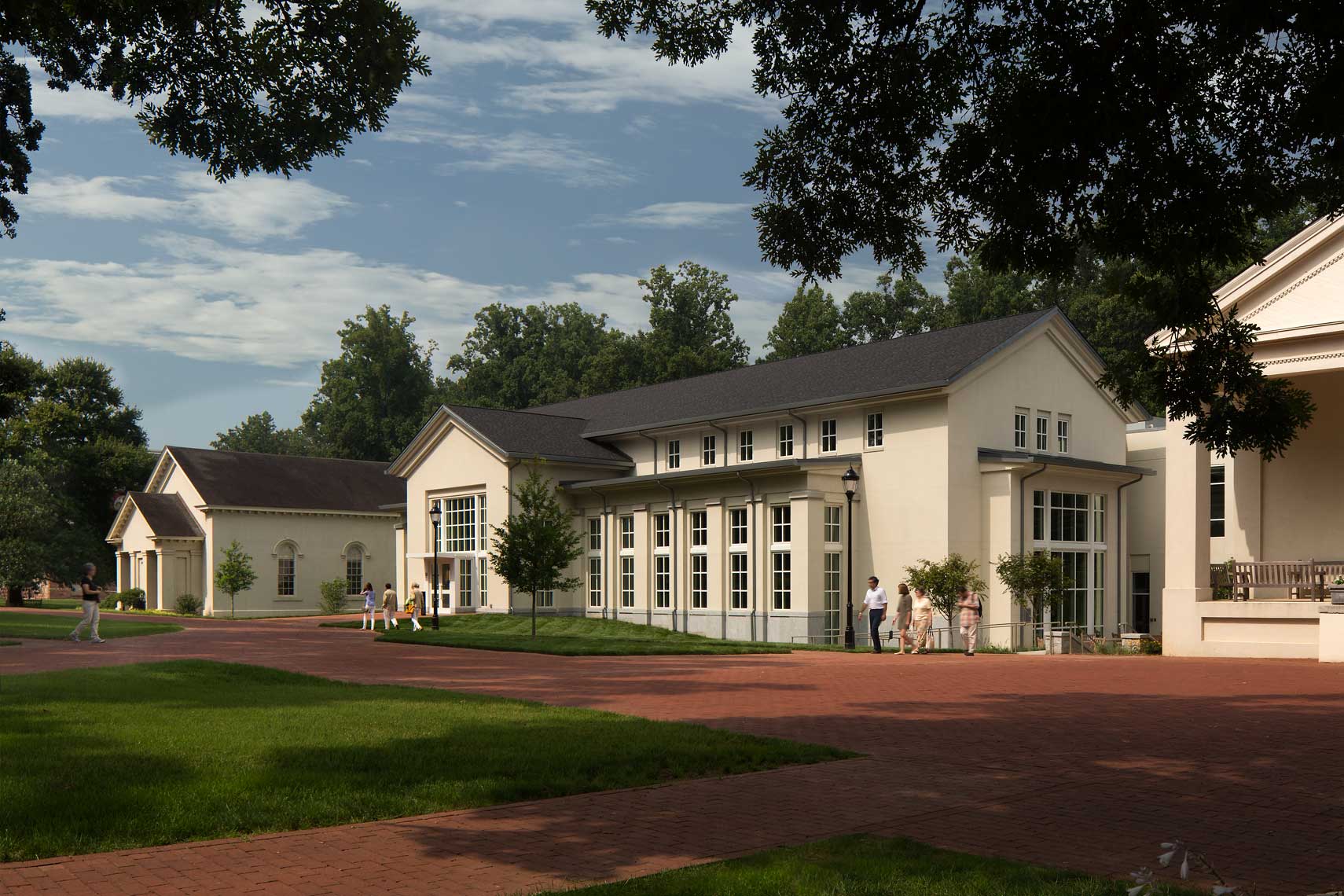


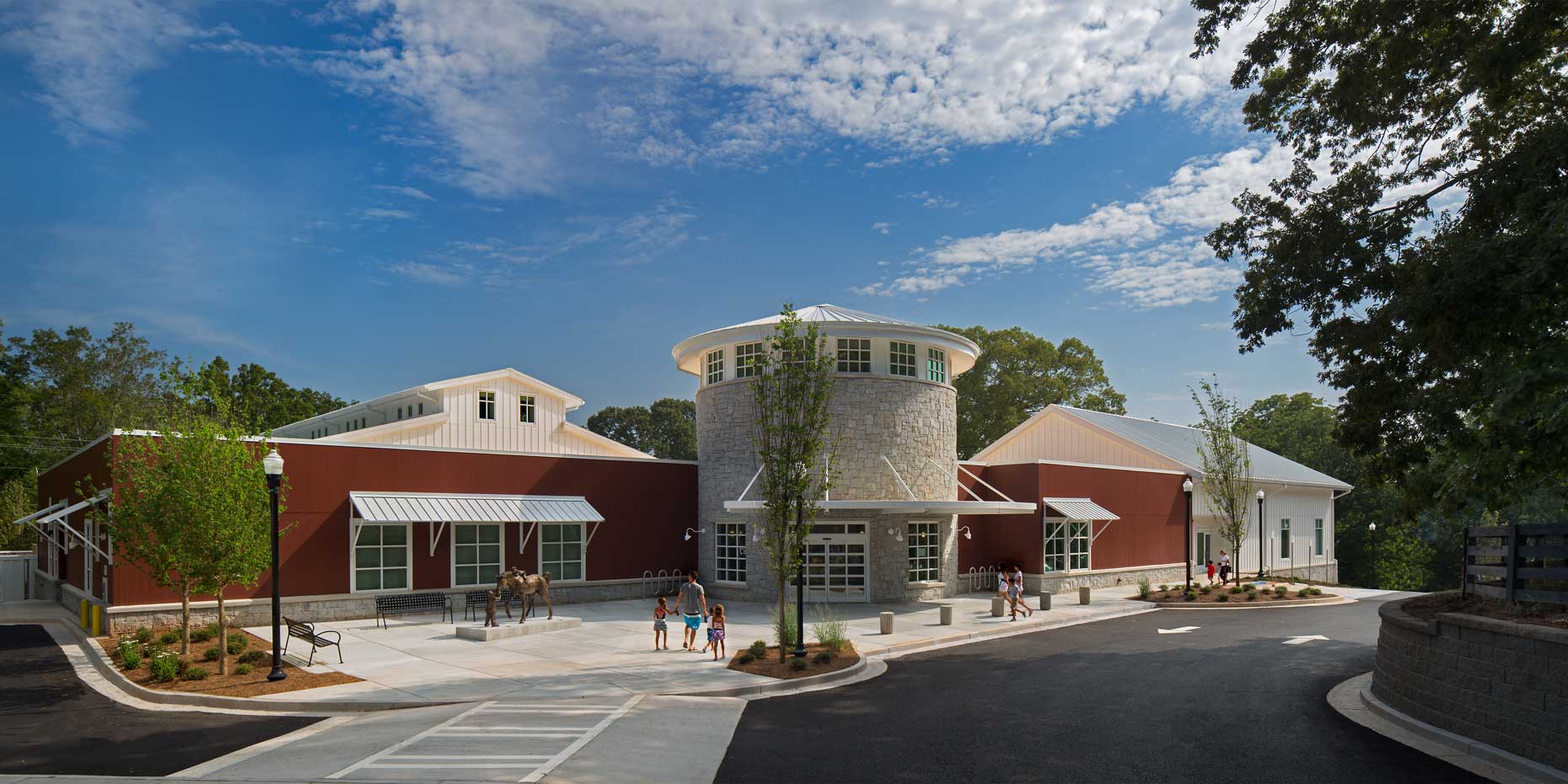
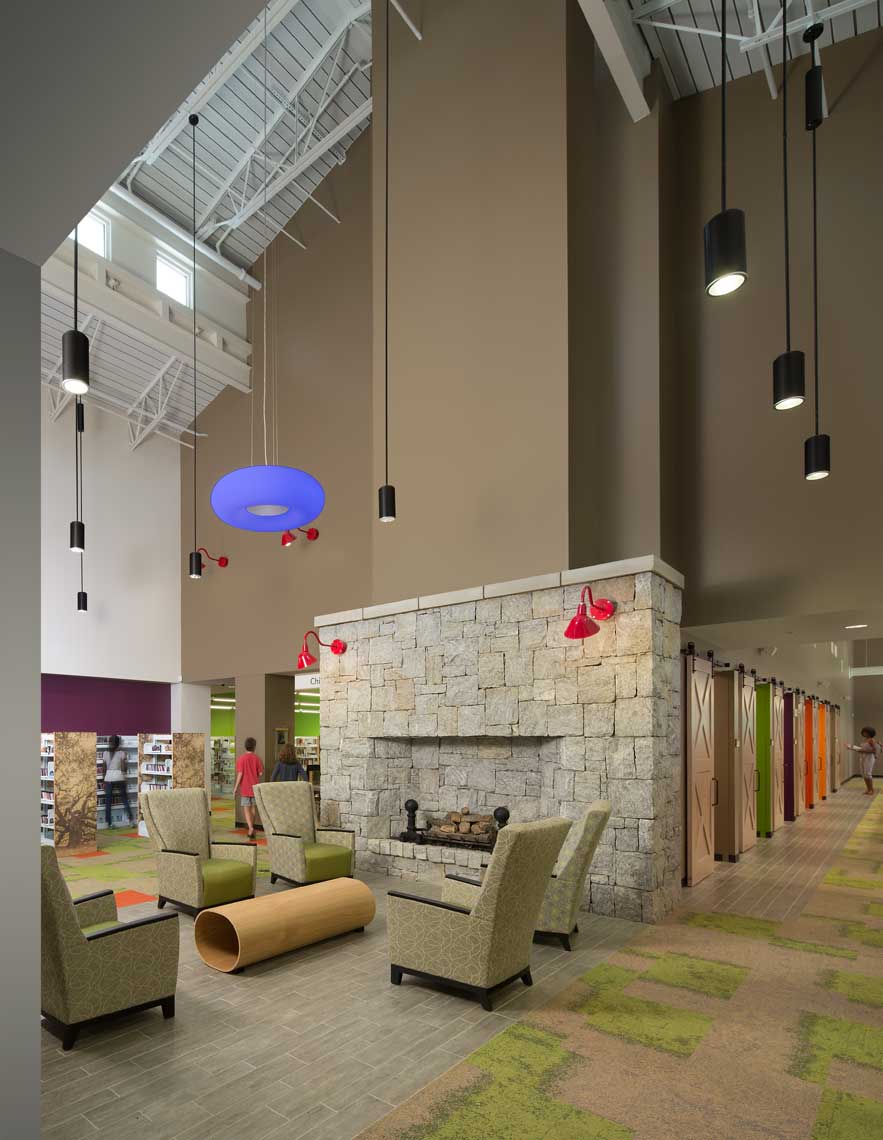
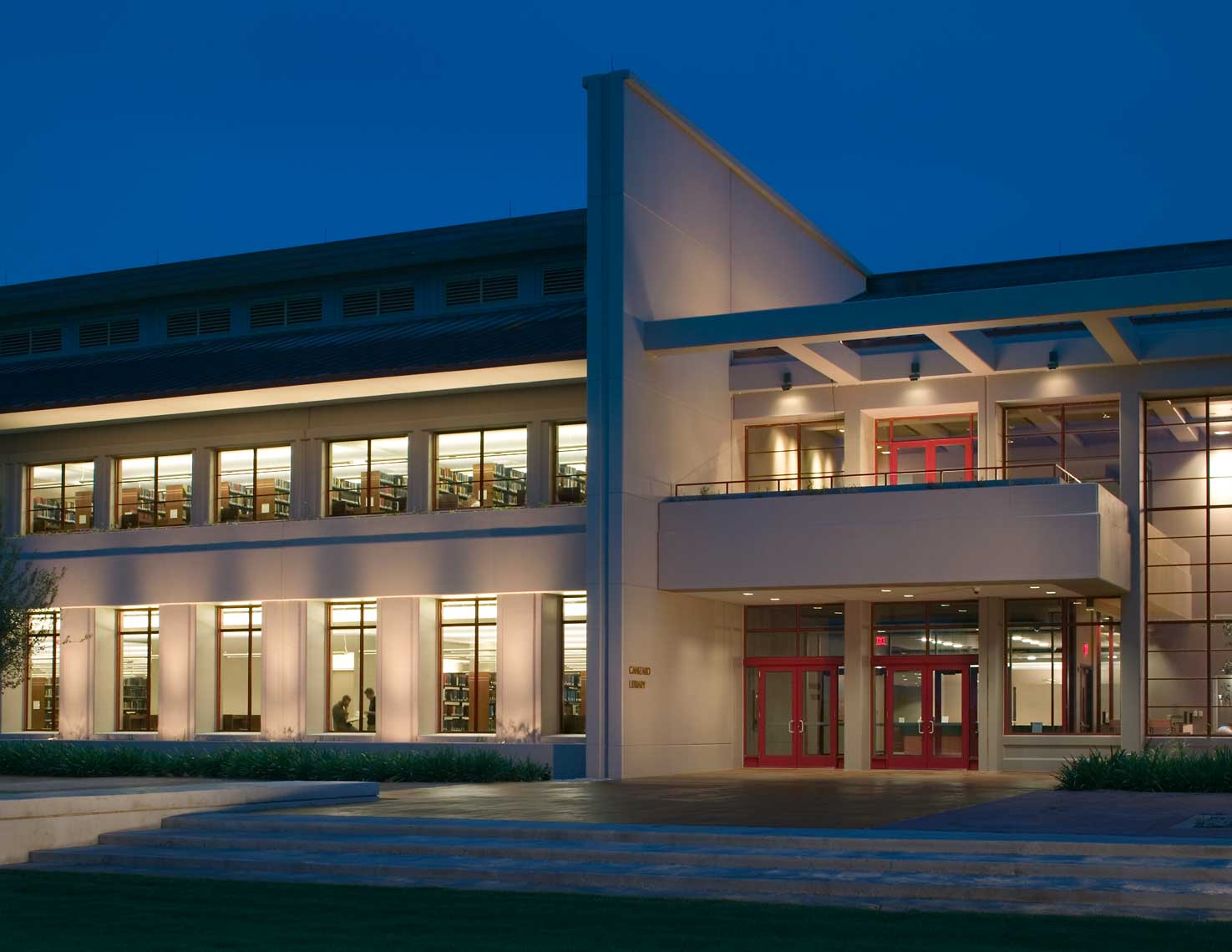
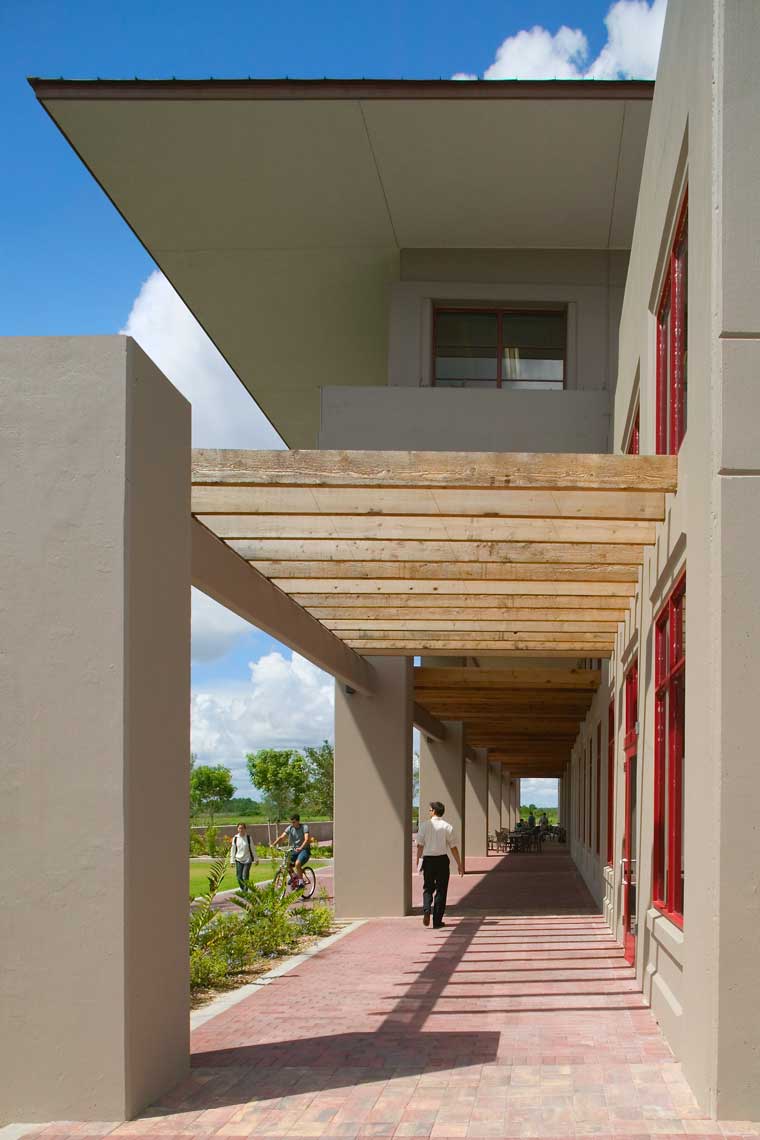
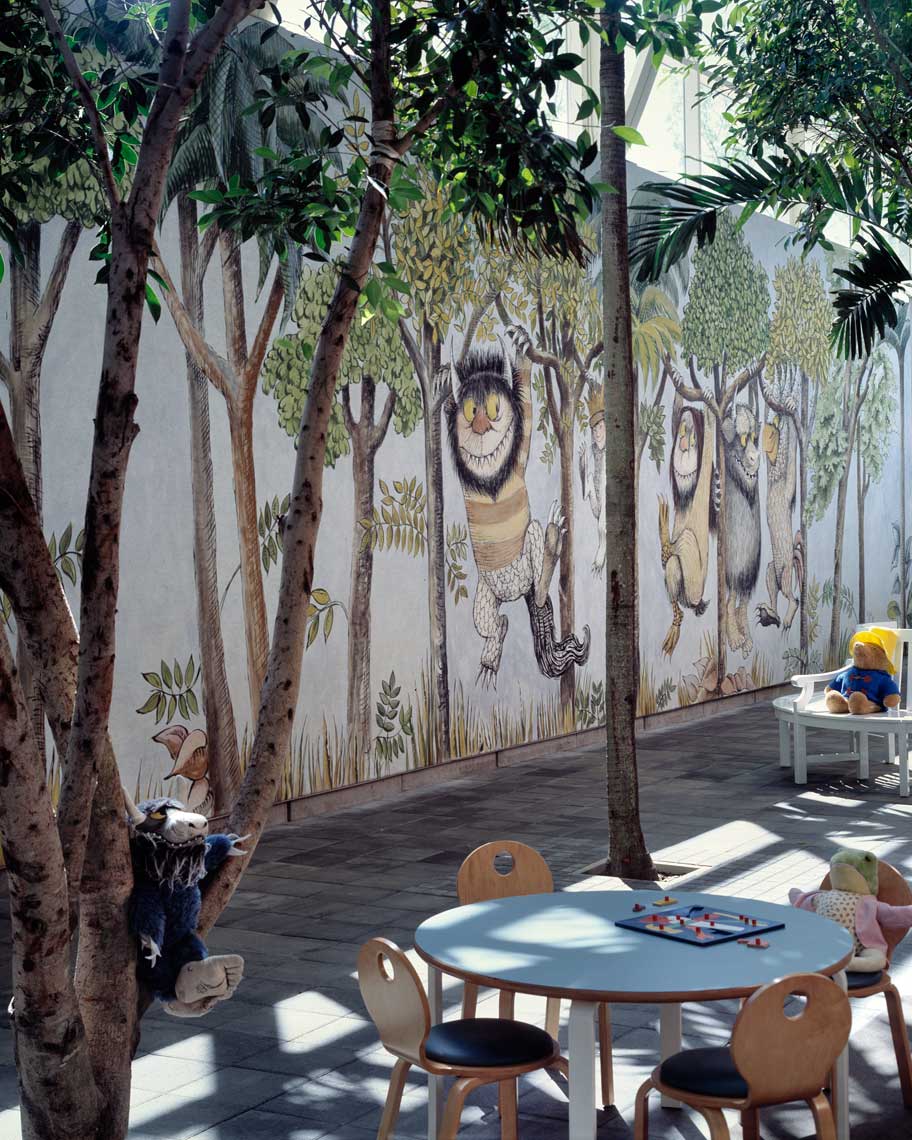
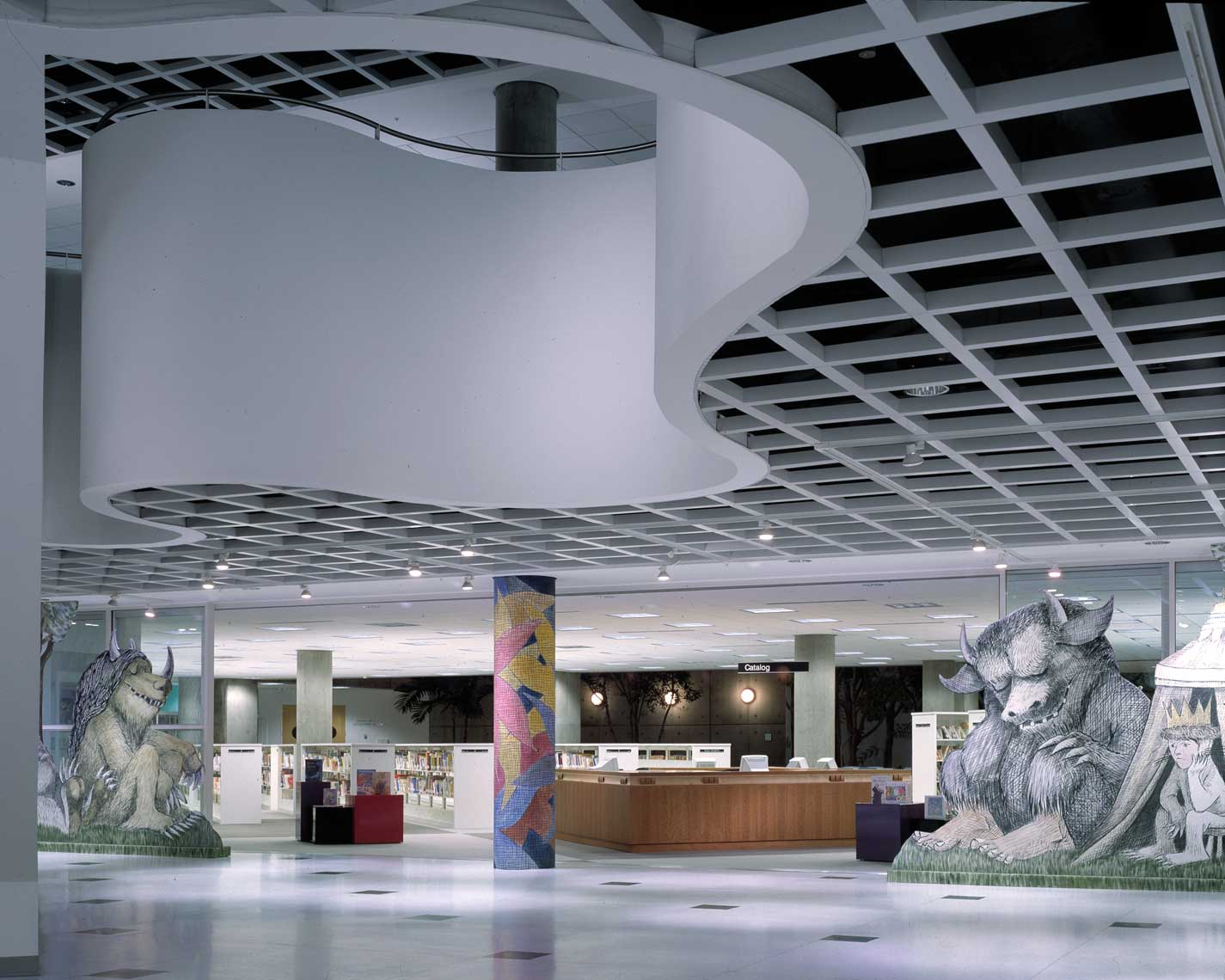
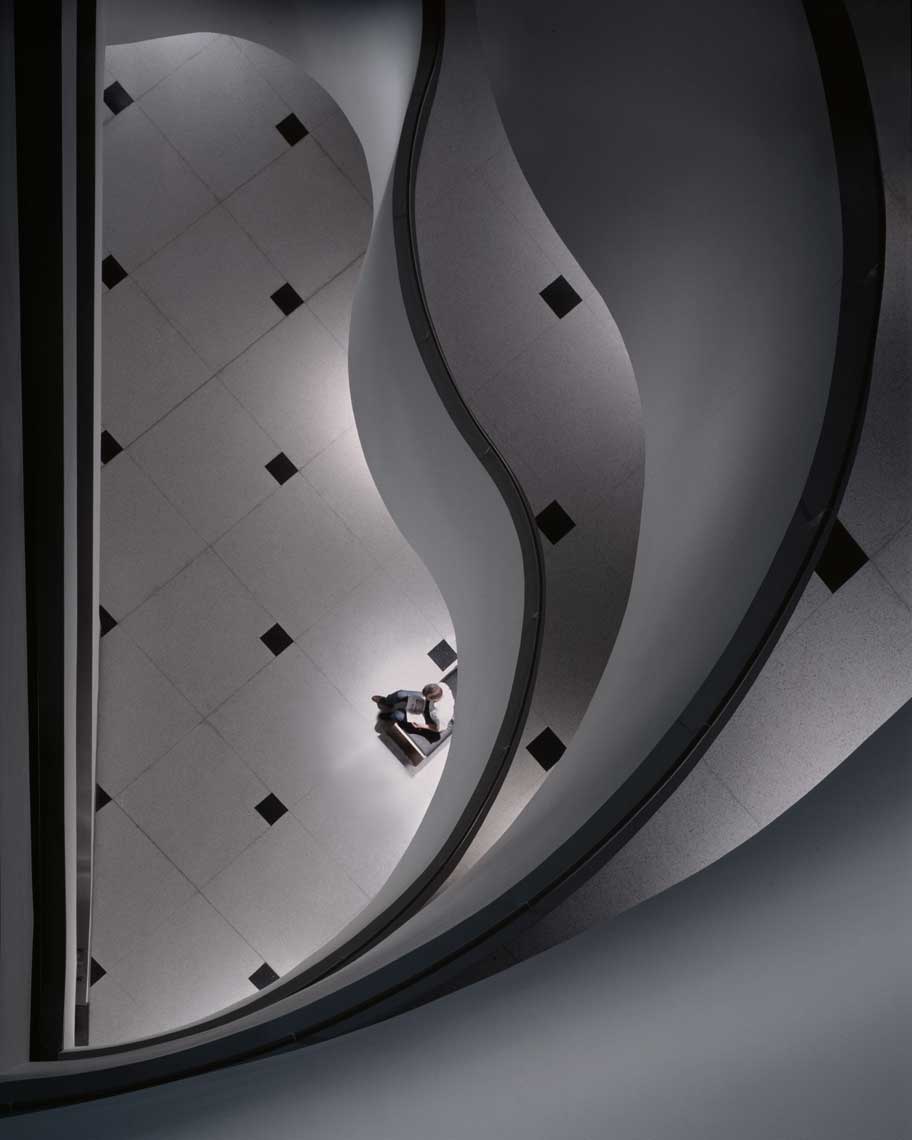
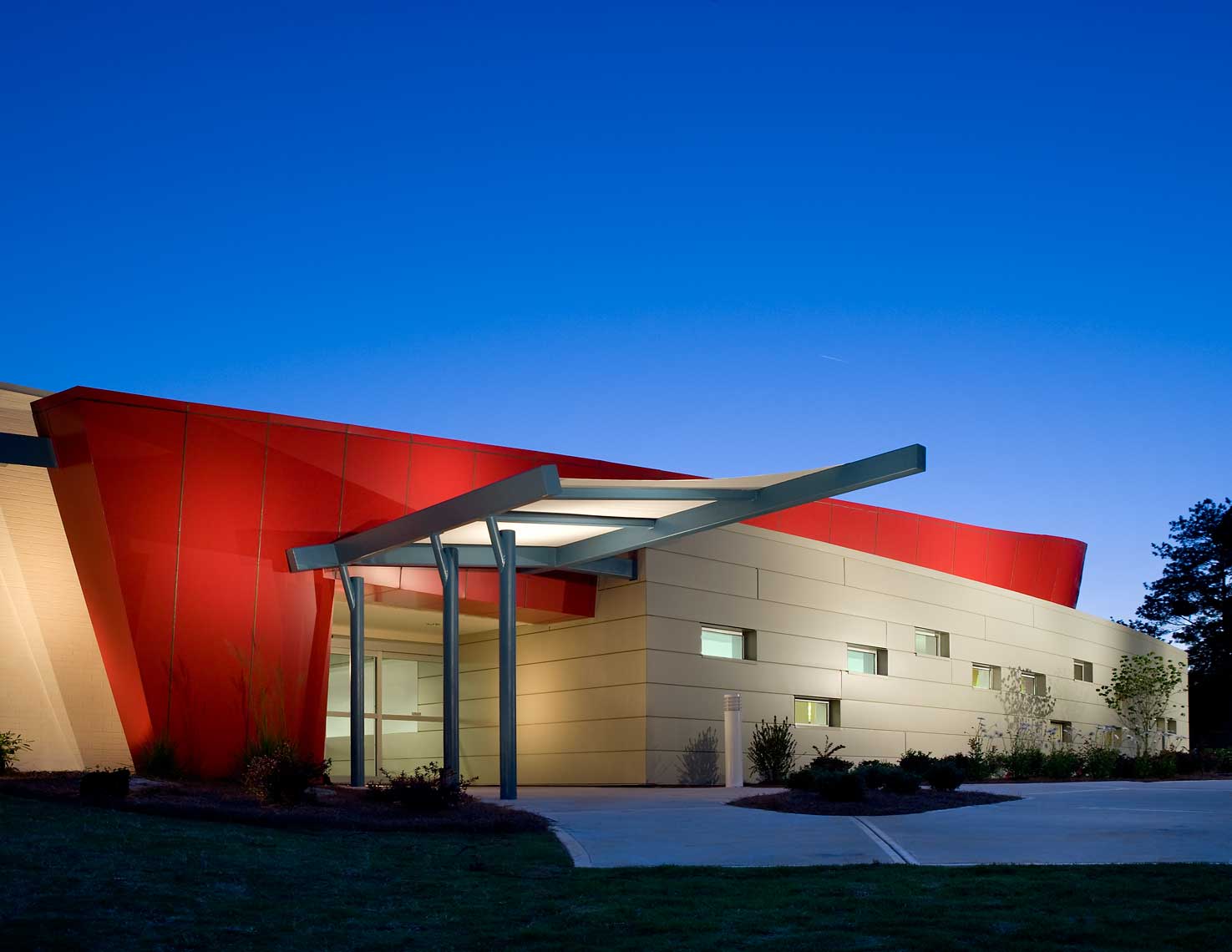
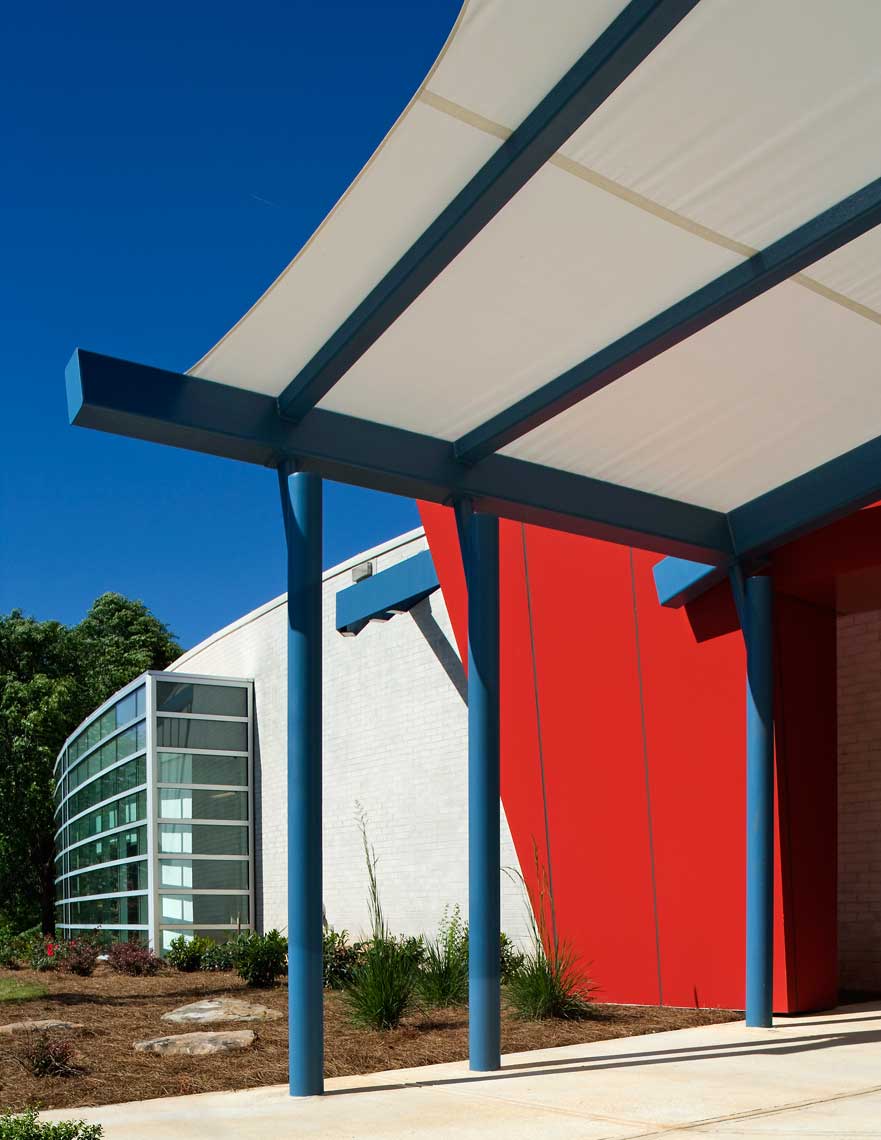
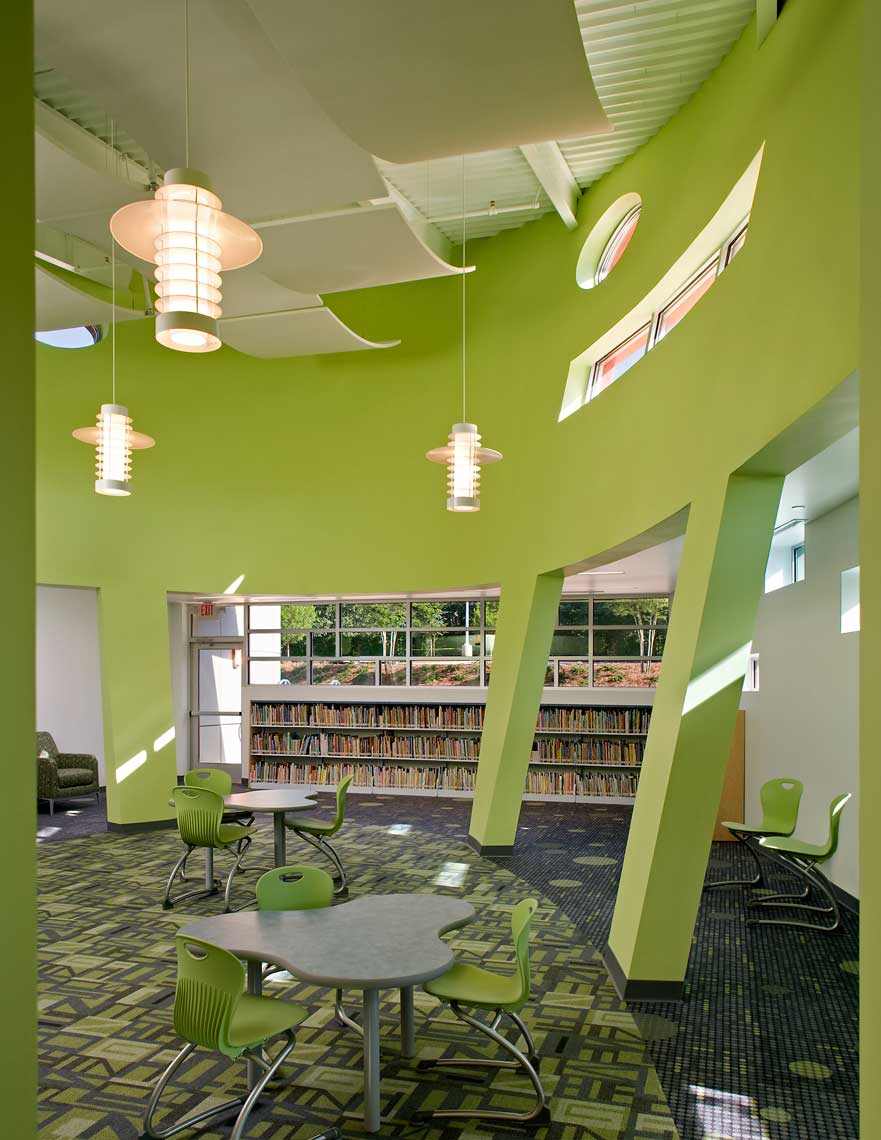
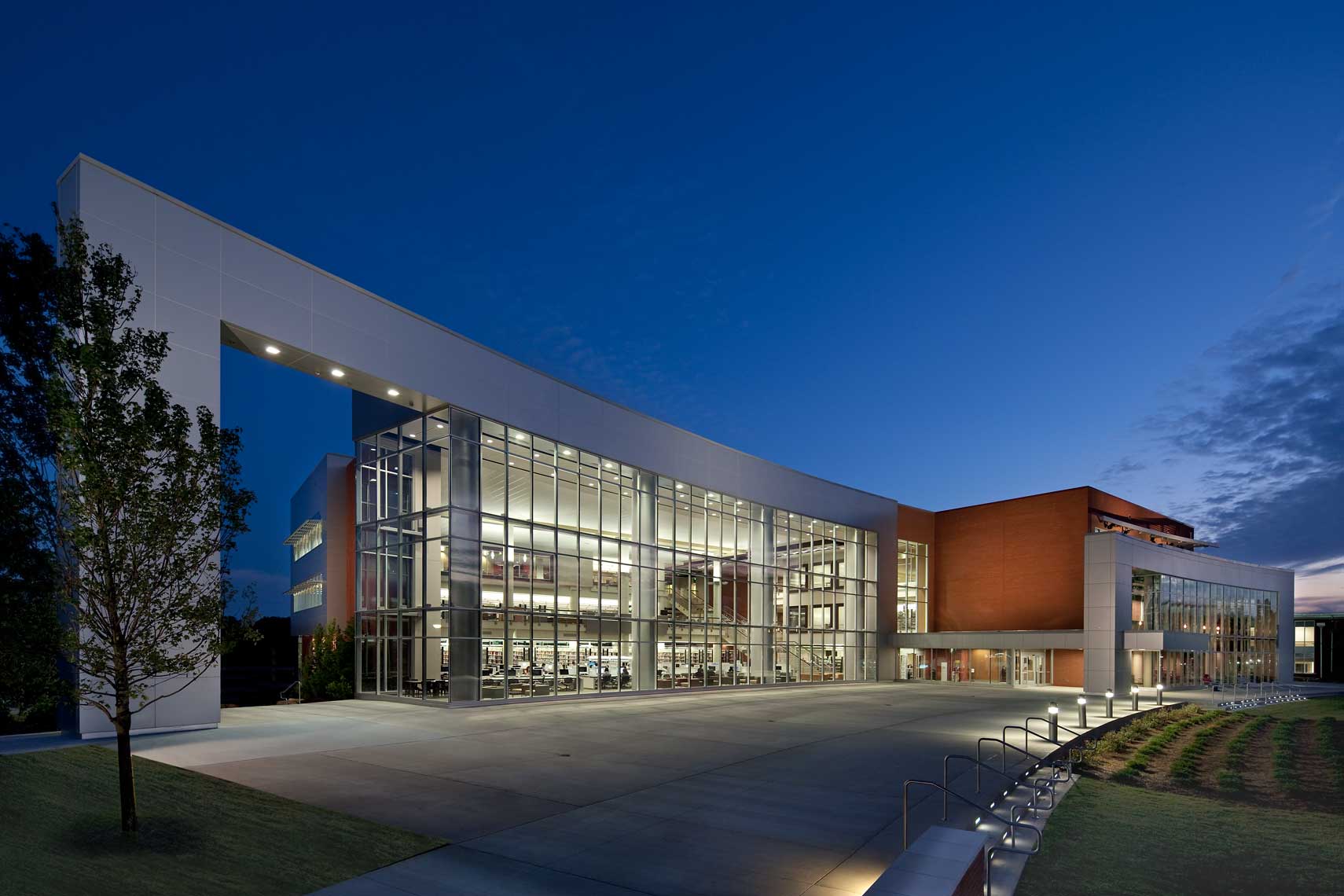

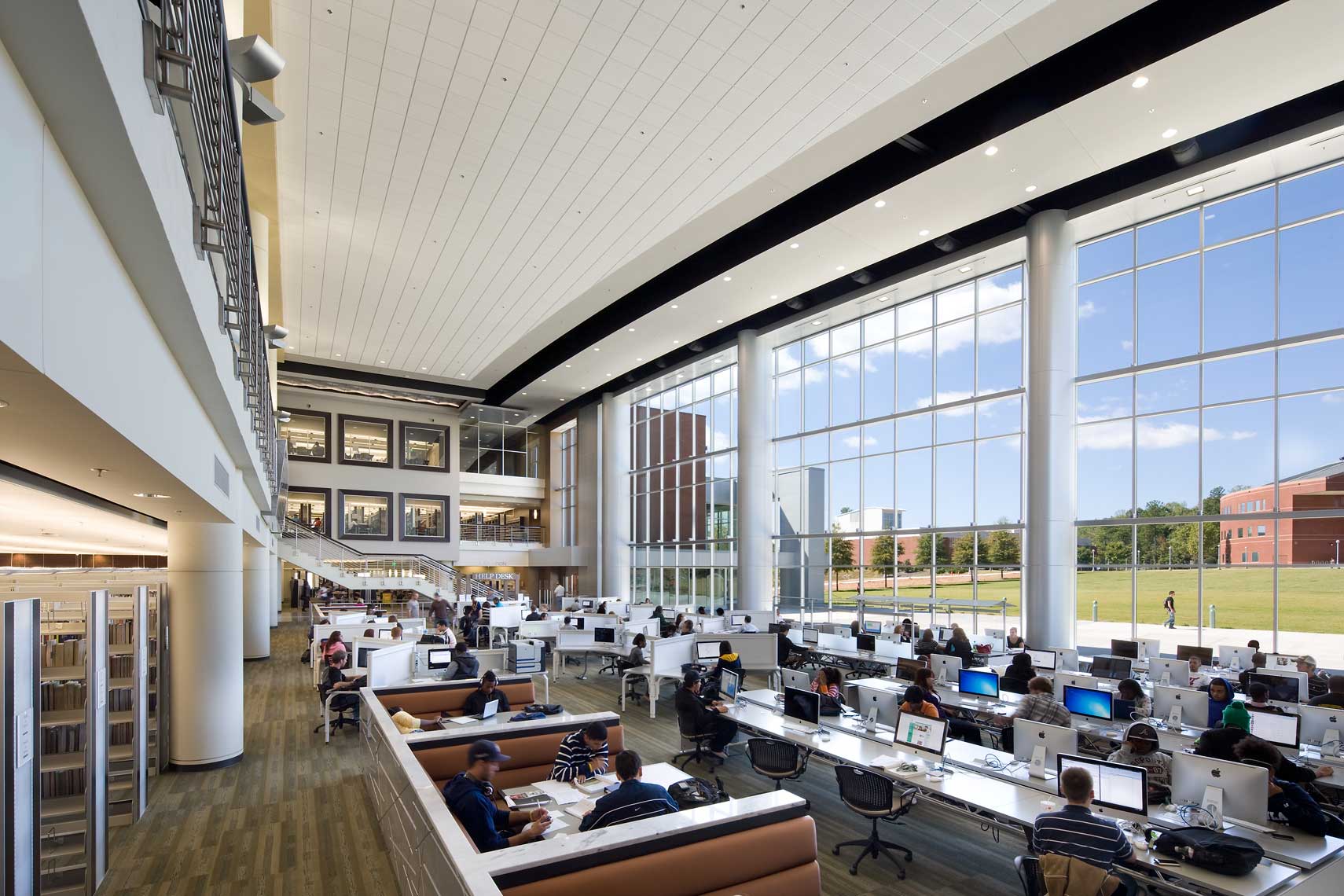
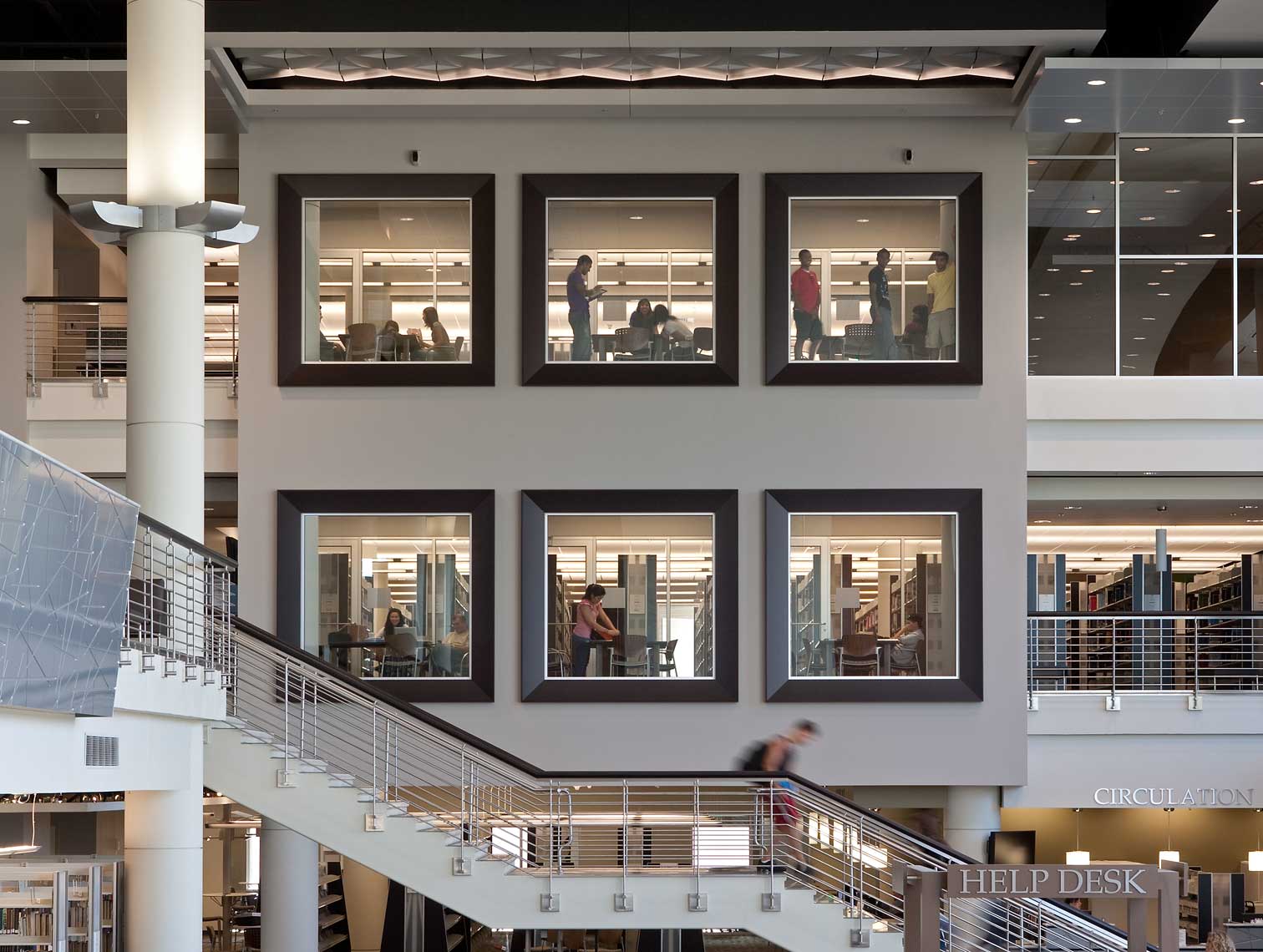
































Libraries store the energy that fuels the imagination. They open up windows to the world and inspire us to explore and achieve, and contribute to improving our quality of life.
Sidney Sheldon (Author)
Most of us can remember a time, not that long ago, when the primary function of a library was to house print media. The rapid advancement of distance learning, electronic media, and of course the juggernaut of all media, the internet, have profoundly altered the landscape of libraries both today and into the future. Today’s library design, planning, and construction incorporates adaptability and flexibility, with technical design to service digital natives. The term “Biblio-Renaissance” begins to encompass this shifting design trend.
From a photographic standpoint, this currently presents us with the ability to show library interiors that boast fewer volumes within the stacks, but more open volumes of space for the media center patrons to circulate within social spheres. The result is a shift away from a warehouse feel, with rows of shelving cleanly demarking pedestrian paths, in favor of incorporating more art and more open “living rooms,” for study, collaboration, and relaxation. Children’s areas in particular have come into their own with immersive environments with bright and bold colors, dynamic shapes, and interactive spaces of learning, inspiring children of all ages. Modern library architecture and design is an evolving craft as technology changes the dynamics of space.
You will see in the portfolio above the use of form, shape, and color of libraries within a variety of architectural styles, which complement their communities, while also helping to define them.